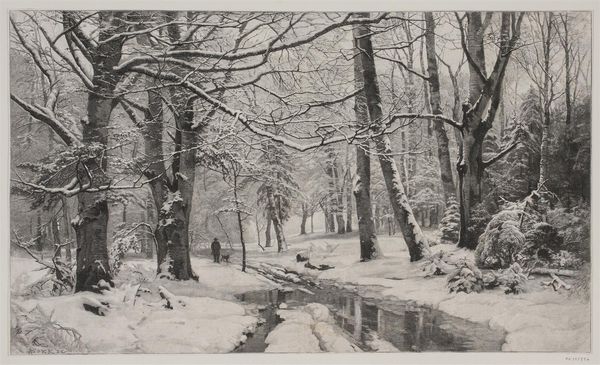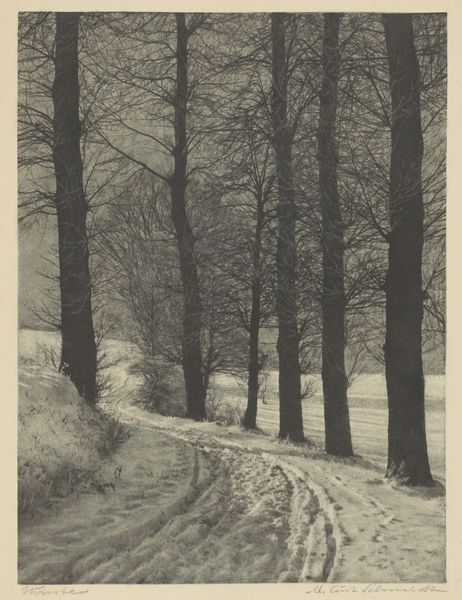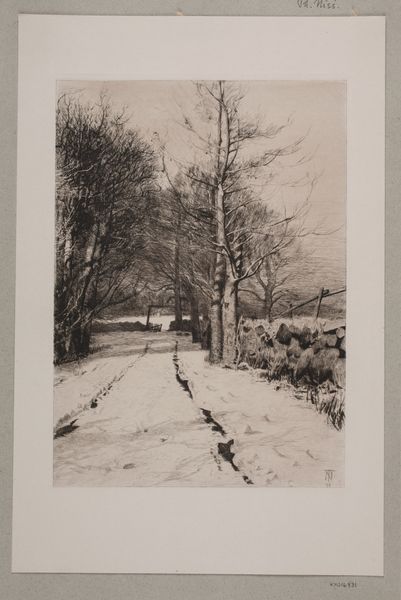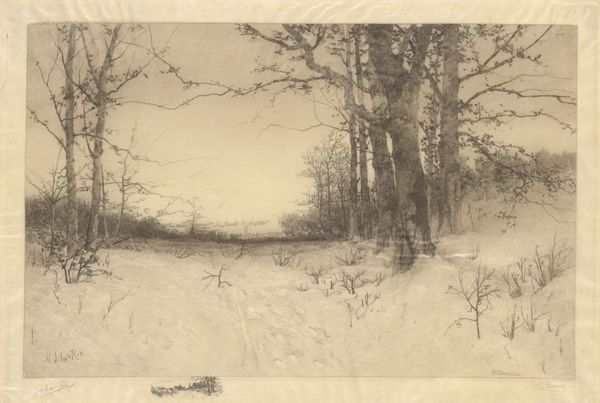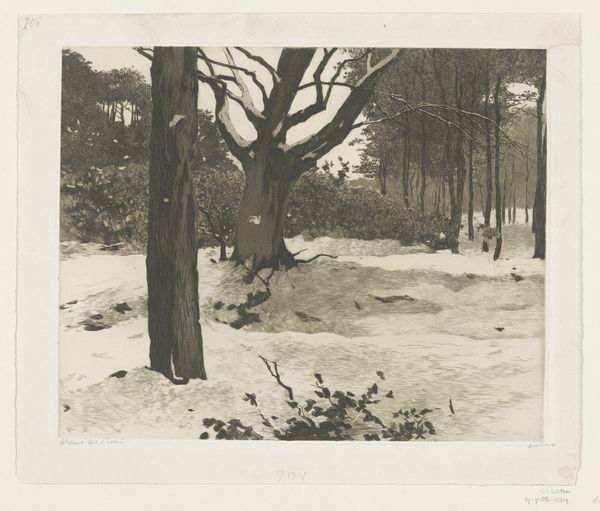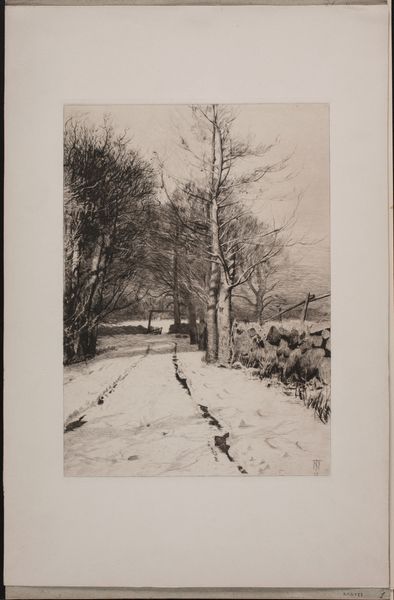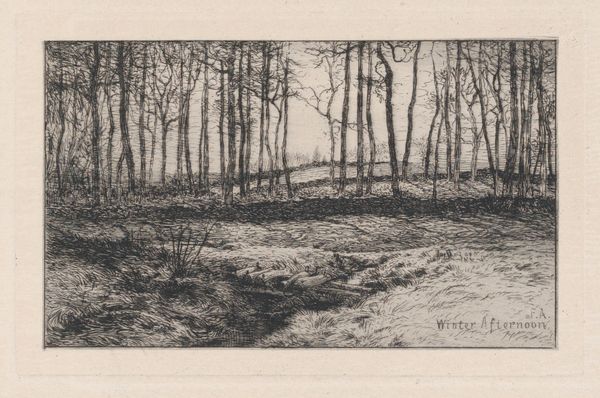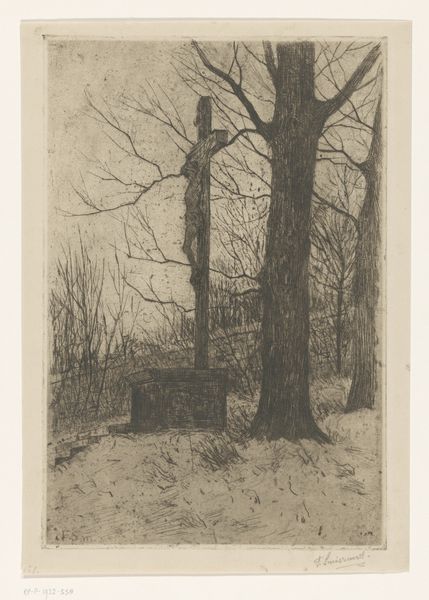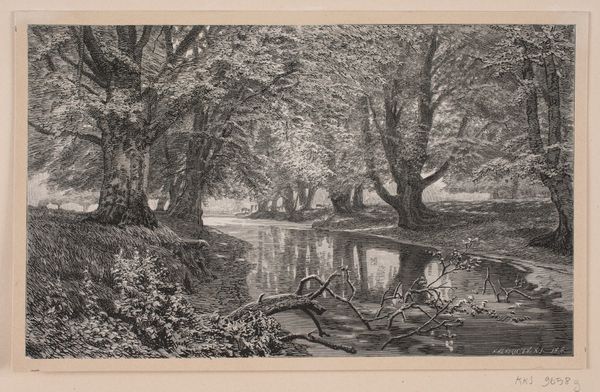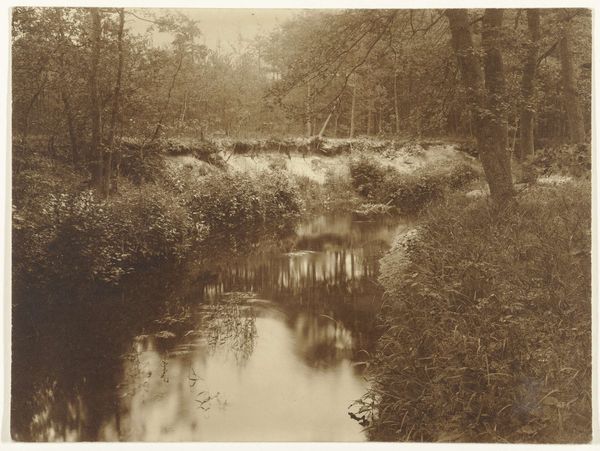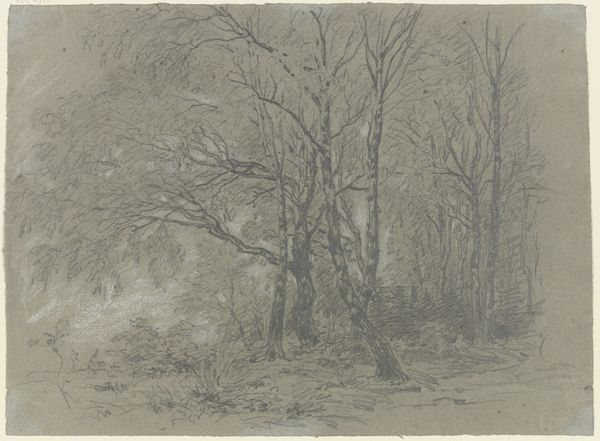
Dimensions: 320 mm (height) x 540 mm (width) (bladmaal)
Editor: This is André Bork's 1896 woodcut and print, "Winter Day in a Forest." It feels intensely still and hushed, like the forest is holding its breath. The monochrome palette and intricate detail give it a melancholic beauty. What historical or cultural narratives do you see woven into this winter scene? Curator: It's tempting to see this as simply a picturesque landscape. However, remember that landscapes, even seemingly neutral ones, are never apolitical. Consider the rise of national romanticism in the late 19th century. Artists like Bork were, consciously or unconsciously, contributing to ideas of a national identity rooted in the land. What does it mean to portray this Danish forest in winter? Is it about resilience? Hardship? Editor: That's interesting. I hadn't thought about the nationalistic angle. It seems so quiet and solitary. Almost separate from society. Curator: And who is this solitary figure walking the dog? Consider the historical context of land ownership and access. Who has the privilege to wander freely through the forest? Are they representative of traditional agrarian lifestyles, or perhaps symbols of increasing urbanization? How might class or gender inform this individual's experience of nature? Editor: I suppose it represents the increasing urbanization in Denmark at that time...I didn't even consider who gets to occupy a landscape like this. Curator: Precisely. It also invites reflection about our current environmental discourse: this solitary figure leaves traces in an untouched landscape. Can we divorce his presence from its consequences? Editor: This really reframes how I see landscape art. I’ll remember that artworks have social meaning far beyond aesthetic impressions.
Comments
No comments
Be the first to comment and join the conversation on the ultimate creative platform.
